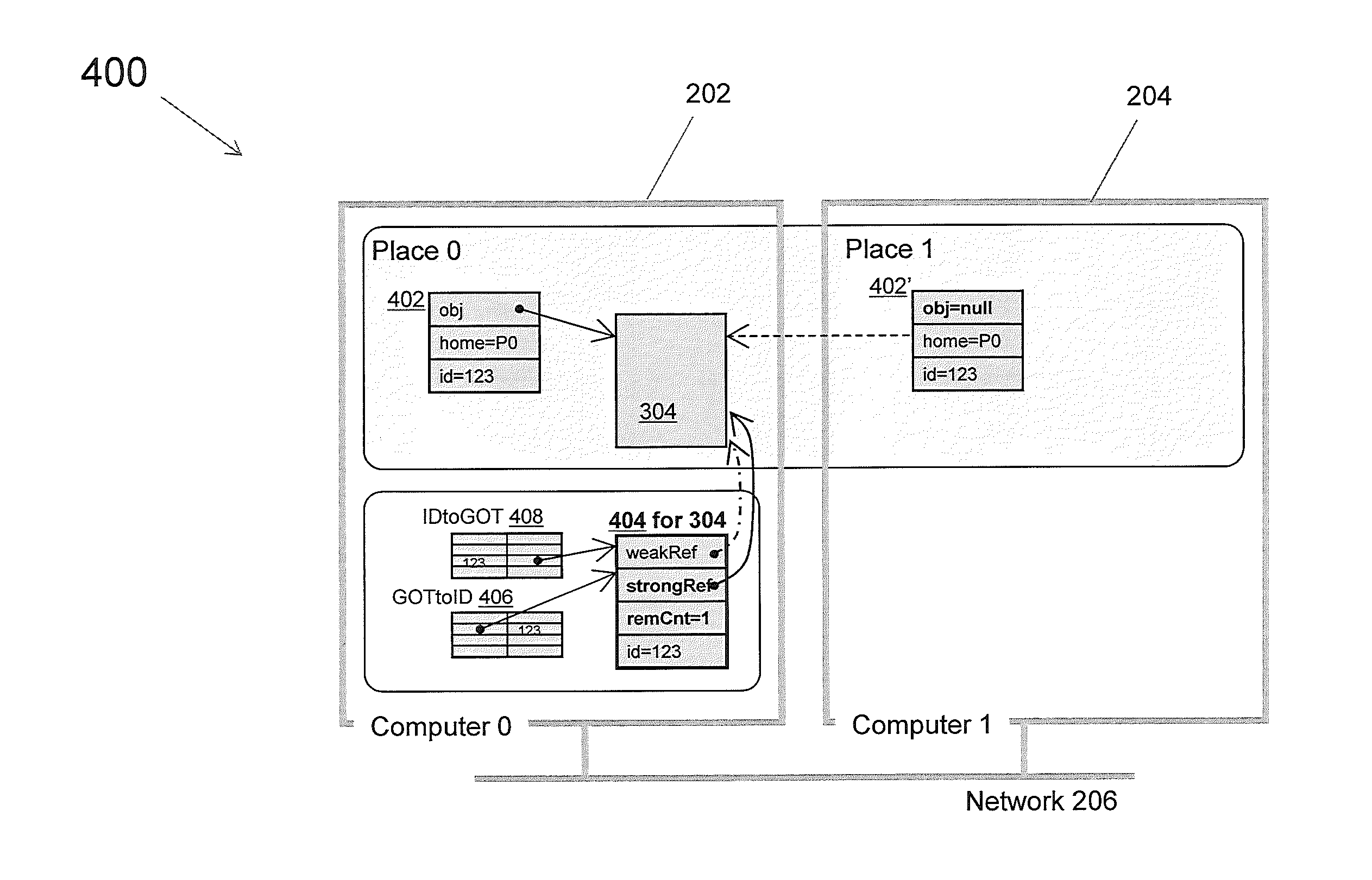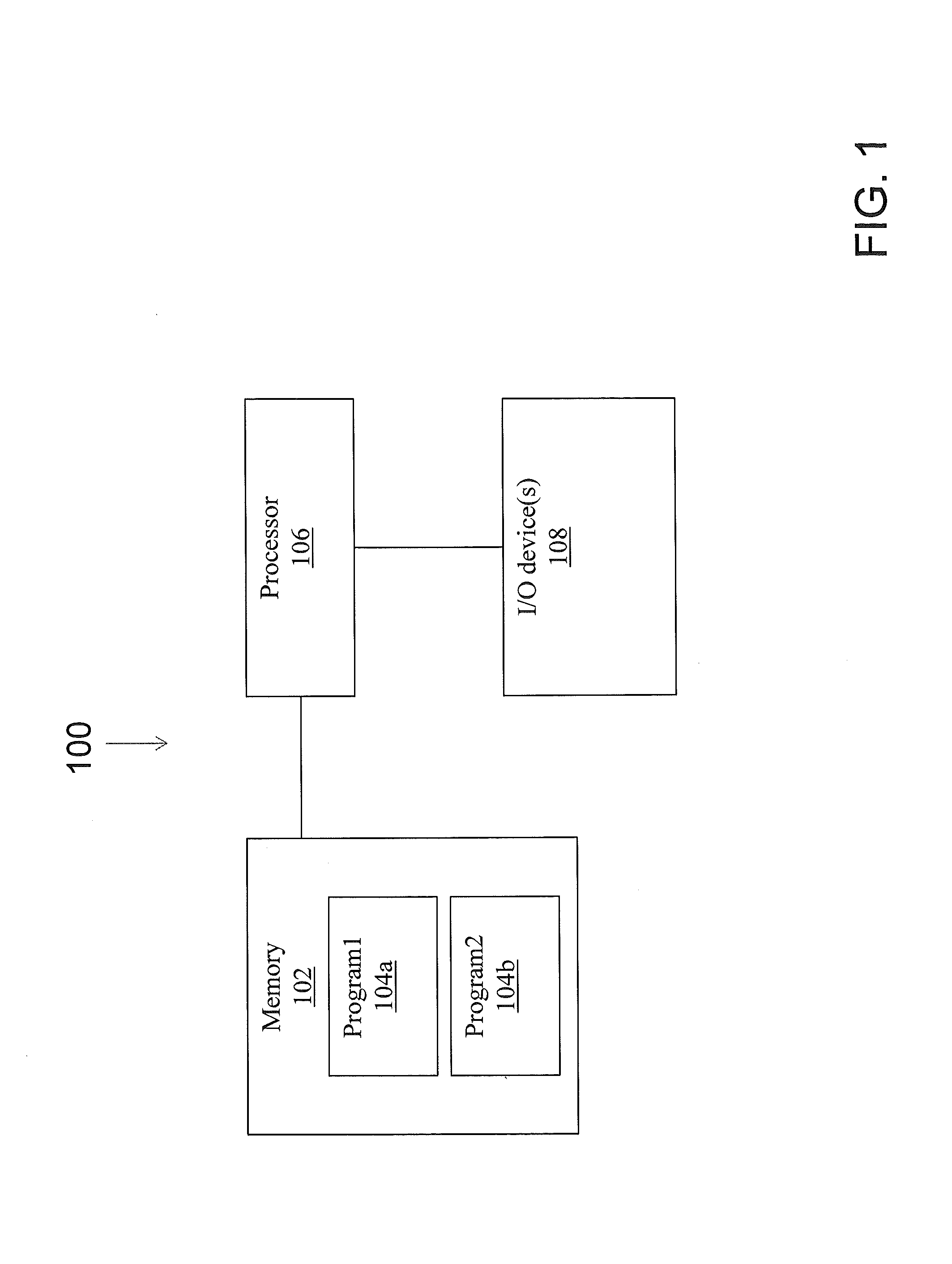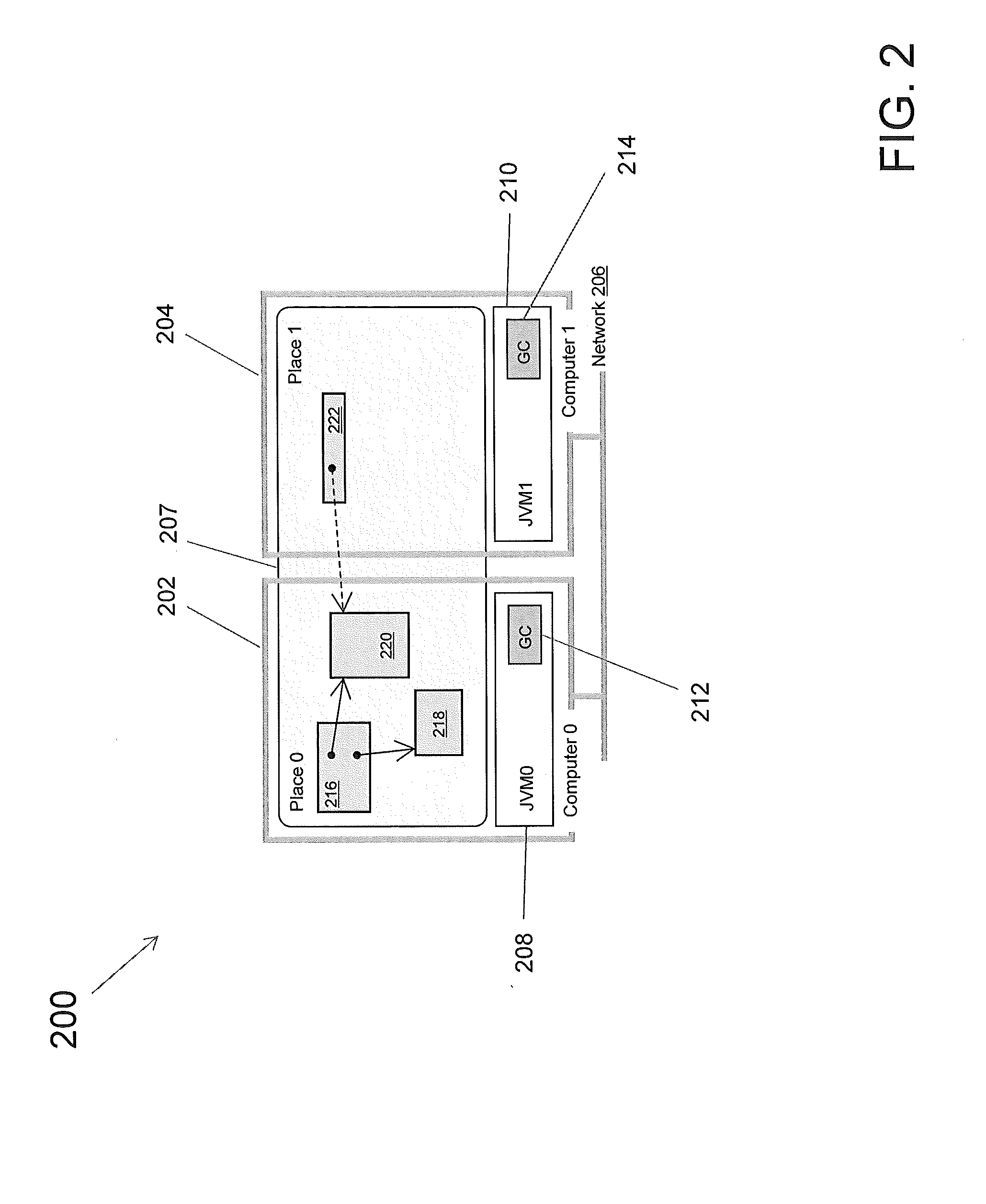Garbage collection of an object
a collection and object technology, applied in the field of garbage collection in the computing environment, can solve the problems of affecting the affecting the execution performance and interoperability of the second or lower-level language, and not being easy to check
- Summary
- Abstract
- Description
- Claims
- Application Information
AI Technical Summary
Benefits of technology
Problems solved by technology
Method used
Image
Examples
Embodiment Construction
[0016]In accordance with various aspects of the disclosure, a low-cost mechanism may be provided to garbage-collect remotely-referenced objects in a distributed computing environment. In some embodiments, the garbage collection mechanism may be provided to, or utilized in connection with, a distributed programming language, such as the X10 project led by International Business Machines Corporation (IBM). The garbage collection mechanism may be provided to the distributed programming language running on a lower-level language, such as Java, without modifying the lower-level language.
[0017]It is noted that various connections are set forth between elements in the following description and in the drawings (the contents of which are included in this disclosure by way of reference). It is noted that these connections in general and, unless specified otherwise, may be direct or indirect and that this specification is not intended to be limiting in this respect. In this regard, a coupling ...
PUM
 Login to View More
Login to View More Abstract
Description
Claims
Application Information
 Login to View More
Login to View More - R&D
- Intellectual Property
- Life Sciences
- Materials
- Tech Scout
- Unparalleled Data Quality
- Higher Quality Content
- 60% Fewer Hallucinations
Browse by: Latest US Patents, China's latest patents, Technical Efficacy Thesaurus, Application Domain, Technology Topic, Popular Technical Reports.
© 2025 PatSnap. All rights reserved.Legal|Privacy policy|Modern Slavery Act Transparency Statement|Sitemap|About US| Contact US: help@patsnap.com



